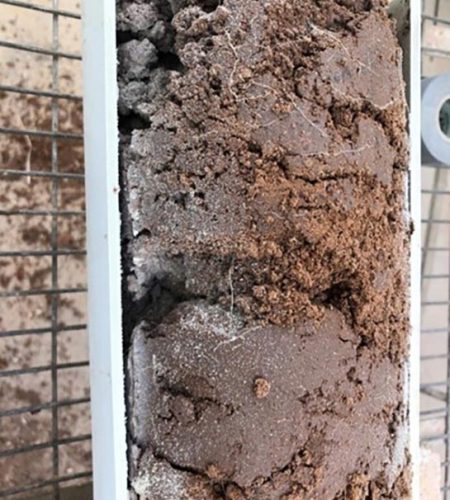This fact sheet supports the ‘Addressing complex soil constraints’ webinar presented by Soil CRC Project Leader Dr Jason Condon (Charles Sturt University). In this webinar, Dr Condon highlights the Soil CRC research into addressing complex soil constraints with one solution, rather than many individual solutions.
Understanding And Addressing Complex Soil Constraints
Managing multiple soil constraints is difficult. Historically, soil research focused on singular constraints, but many soils have multiple constraints occurring within one layer or throughout the soil profile. These co-limitations, such as sodicity and high sodium concentrations causing dispersion, lead to complex soil conditions. These constraints vary seasonally and between seasons, impacting plant water availability and ultimately plant performance.
Interventions like adding organic matter can address multiple constraints, creating efficiencies and maximising plant productivity. This Soil CRC project aimed to assess amendment effectiveness, determine mechanisms for soil property changes, and provide data for future field evaluations and modelling, fostering improved soil management.
Challenges In Addressing Problem Soils
Engagement with six farming system groups across Western Australia, South Australia, Victoria and New South Wales revealed problem soils characterised by complex issues, such as water repellence, subsoil moisture retention, and boron toxicity. These “problem soils” have physical or chemical constraints that either stop water entering the profile or inhibit root exploration of the profile.
Assessing The Effects Of Various Soil Amendments
The study evaluated the impact of different soil amendments, including chicken manure pellets, gypsum, elemental sulphur, lime, magnesium silicate and rock phosphate on soil properties and crop growth. Data analysis revealed changes in soil pH, turbidity, and electrical conductivity in response to amendments, indicating potential improvements in soil structure and nutrient availability.
Comparative trials further explored the contribution of organic matter, nutrients and gypsum to plant growth, providing insights into the effectiveness of different treatments and their interactions in promoting crop productivity. While some soils showed improved yields, root growth responses differed, indicating the complexity of soil-plant interactions and the need for site-specific management strategies.
Challenges And Considerations In Soil Amendment
Despite the benefits observed with chicken manure pellets and elemental sulphur in improving soil nutrition and offsetting pH gains, deep subsoil constraints remain challenging due to high carbonate levels and salinity. While amending topsoils and upper subsoils shows promise, realistic expectations are needed regarding the depth of beneficial impact. Ongoing experiments aim to expose the mechanisms behind these benefits and address uncertainties surrounding solute potential and water movement in saline soils.
Challenges In Translating Pot Trial Data To Field Conditions
While pot trials offer insights into the effectiveness of soil amendments, translating findings to field conditions poses challenges due to structural differences and root system constraints. However, pot trials are valuable to inform field evaluations and help establish foundational knowledge for further economic assessments and adoption considerations.
Long-Term Benefits Of Organic Amendments In Soil Management
Organic amendments may offer longer-lasting benefits compared to inorganic treatments, with potential slow-release nutrient provision over time. While inorganic amendments provide immediate nutrient availability, organic matter decomposition can sustain soil health over an extended period, contributing to soil fertility and structure improvement.


